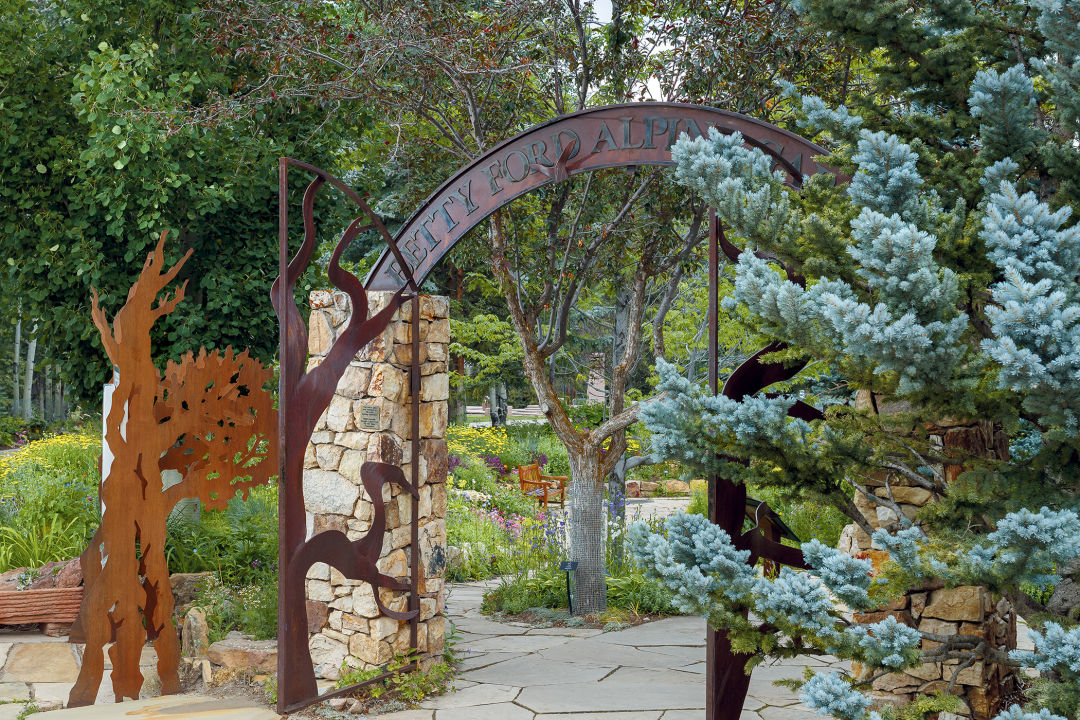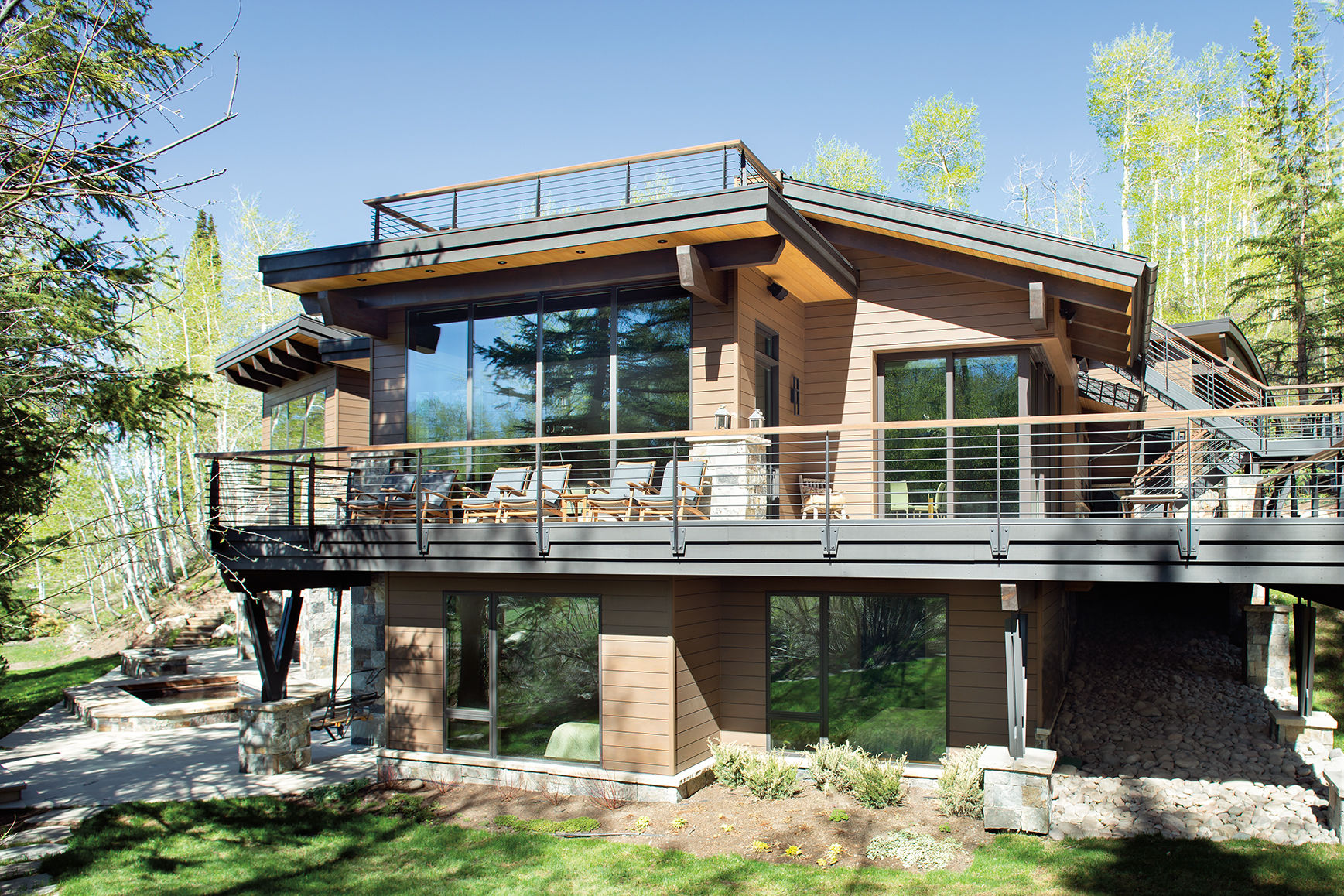Five Reasons to Visit Vail’s Betty Ford Alpine Gardens

The entrance to the Betty Ford Alpine Gardens
Image: Todd Winslow Pierce/BFAG
If making the two-hour drive to Vail isn’t on your summer itinerary, it should be. Of course, it’s fun to stroll through the quaint, European-inspired streets, but a big—yet under-the-radar—attraction is the Betty Ford Alpine Gardens. Named for former First Lady Betty Ford, who lived in Vail with her husband, President Gerald R. Ford, for many years, the Gardens focus solely on plants that thrive in harsh alpine environments around the world.
At 8,200 feet, it’s North America’s highest botanical garden. The collection of more than 3,000 species represents both familiar and exotic ecosystems from such places as South Africa, the western European Alps, the Caucasus Mountains, central Asia, and the Himalayas. A picturesque and shady respite, the Gardens offer meandering paths, secluded benches, lively water features, and colorful blooms that pose a counterpoint to the crowds of summer. Here are five ways to make the most of your visit.
1 Find out what’s growing in your backyard, and way beyond. True to their Rocky Mountain roots, the Gardens feature the only nationally accredited collection of Colorado alpine plants, including rare and endangered species like the Parachute penstemon, which grows in oil-shale talus along steep cliffs in western Colorado, and a variety of phlox found at elevations higher than 10,000 feet in the Mosquito Range above Breckenridge.
2 Engage your inner naturalist. Programs for children and families include daily scavenger hunts and weekly nature-themed activities. There’s even a Children’s Garden with a pint-size food market operated by kids, for kids. For adults, in addition to guided tours and lectures, painting workshops in the perennial gardens are popular, as are the thrice-weekly outdoors yoga sessions. (Events this summer may be subject to Covid restrictions.)
3 Learn what’s at stake for these tiny “conquerors of the cold.” The Gardens are a leader in North American alpine plant conservation, and their stewards are advocates for alpine plants around the world. In collaboration with botanists from other organizations, Gardens horticulturists work in high-alpine areas throughout Colorado to understand changes in population dynamics and growth, important indicators of threats posed by global change.
4 Get up close with rare blooms. In the Alpines of the World gardens, look for the big flowers of Himalayan rhubarb and the central Asian giant bellflower, species that bloom only once in their lifetimes. Microscopic columbines and rare, tiny penstemons from Colorado flourish in troughs around the Education Center. Evergreen alpines from the mountains of Iran grow next to the very exotic Chilean ice cup flower in the Alpine House. If you’re lucky, you might even see the prickly blue poppy in bloom in the Himalayan garden.
5 Play Heidi in the Swiss Alps. High-altitude favorites edelweiss and gentian thrive here. There’s nothing quite like the trumpet gentian in June, its intense cascades of blue color accentuated by the extreme levels of ultraviolet light. Don’t miss the Alpine Crevice Garden, a magic carpet of tiny pink, purple, and blue jewels that reach their peak in mid-June.
Learn more in Sarah Chase Shaw’s new book, On the Roof of the Rocky Mountains: The Botanical Legacy of Betty Ford Alpine Gardens. The Betty Ford Alpine Gardens are free and open to the public daily from dawn until dusk.














































